
TOKYO☆Neo Duo Exhibition
~Tradition and Innovation~
|
|
An Exhibition by HIROYUKI MATSUURA ・ SHIGEKI HAYASHI and
other upcoming Japanese Contemporary Artists
|
11 - 20 January
Japan Creative Centre (JCC)
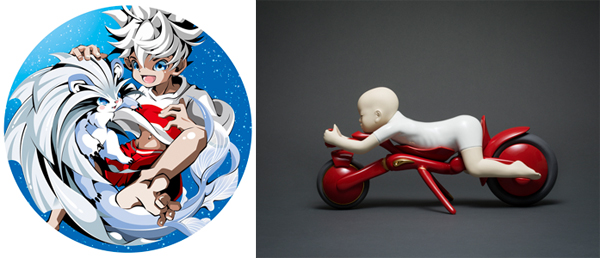
© Hiroyuki Matsuura, Mer Baby (120cm circular, Acrylic on canvas) / Shigeki Hayashi, 1/2(half)OO (20×40×19cm, Porcelain)
|
Japan Creative Centre (JCC), Embassy of Japan in Singapore and Takashimaya proudly present TOKYO☆Neo Duo Exhibition ~Tradition and Innovation~ An Exhibition by HIROYUKI MATSUURA ・ SHIGEKI HAYASHI and other upcoming Japanese Contemporary Artists, the first ever art exhibition in Singapore by the Takashimaya Art Department, in what is also the 30th anniversary of the opening of Takashimaya Singapore.
It was at the London world’s fair held in 1885 that Takashimaya, a kimono fabrics dealer, first introduced Japanese textiles, embroidery and other craft products created by Japanese painters and technicians to overseas audiences. Having continued to present work at subsequent international exhibitions, and buoyed by the praise it received from many people, the company established the Takashimaya Art Department, which is celebrating its 112th anniversary this year.
|
Exhibition Period: |
11 – 20 January 2023
Closed on Sundays and Mondays |
|
Opening Hours: |
10am – 6pm
|
|
Venue: |
Japan Creative Centre (JCC)
Embassy of Japan in Singapore
4 Nassim Road Singapore 258372 |
|
Admission: |
FREE |
|
|
In recent years, the Japanese art world has been going through an intense transitional period. During the coronavirus pandemic, the speed of this transition increased, leading to the transformation of existing values and the emergence of new expression. The two artists featured in this exhibition could be called "darlings" of this period.
Hiroyuki Matsuura incorporates aspects of the Japanese manga culture now famous around the world into his artworks, which are extremely popular not only in Japan but throughout Asia. Shigeki Hayashi uses the traditional technique of ikomi to create pieces inspired by science fiction and visions of the near future. Hayashi’s works, too, have garnered much acclaim, with some entering the collections of art museums in Europe.
Another space features seven other upcoming Japanese Contemporary Artists: Yuki Inoue, Naoki Onogawa, Shingo Suzuki, Yoshimasa Tsuchiya, Hiroshi Furuyoshi, Kotaro Hoshiyama and Fuyuki Maehara. The Japanese arts and crafts exported in large volumes during the Meiji period created a sensation on account of their superlative artistry, and in Europe in particular their unsurpassed technical proficiency and high degree of perfection leapt into the limelight. This spirit is still alive in today’s contemporary art scene in Japan, which produces expression filled with the social commentary and contemporaneousness characteristic of contemporary art while making use of traditional techniques.
|
|
Join us for a workshop at JCC to make your own Merlion-shaped chopstick rest! Participants can try their hand at casting a chopstick rest in a mould made by Shigeki Hayashi. This chopstick rest will not be fired, and can be taken home the same day. In addition, participants can freely paint another chopstick rest, that was already moulded in Japan, using an overglaze pen. This chopstick rest will need to fired, so participants will need to come back and collect it on another day. Participants will need to bring their own hand towel, and their own bag to carry their chopstick rest. This workshop is suitable for participants who are 10 years and older.
|
Date: |
Saturday, 14 January 2023 |
|
Time: |
10:30am - 12pm (Registration starts 10am)
1pm - 2:30pm (Registration starts 12:30pm)
3pm - 4:30pm (Registration starts 2:30pm)
|
|
Venue: |
Japan Creative Centre (JCC)
Embassy of Japan in Singapore
4 Nassim Road Singapore 258372 |
|
Admission: |
FREE (Registration required) |
| REGISTER FOR THE WORKSHOP |
10:30am - 12pm
Click button or scan QR to register:


|
1pm - 2:30pm
Click button or scan QR to register:


|
3pm - 4:30pm
Click button or scan QR to register:


|
|
Please register for one timeslot only. If the registration is full, or you would like to cancel your registration, please e-mail us at jcc@sn.mofa.go.jp. We regret that there is limited capacity, kindly register early to avoid disappointment. ALL EVENTS ARE FREE OF CHARGE.
Please inform us at least 3 days before the event if you and/or your accompanying guest are unable to make it. No-show registrants will be noted and be given lower priority for our future events.
|
|
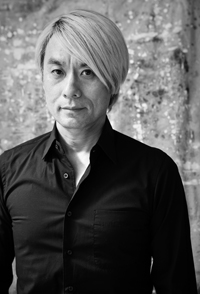
© Hiroyuki Matsuura |
|
Born in Tokyo in 1964, Hiroyuki Matsuura has worked as a graphic designer since 1984 involved mainly in advertising, packaging and logo design, and in 1999, began creating works featuring "character" motifs.
Manga have now become one of Japan's leading cultural products, captivating people around the world. According to Matsuura, who from childhood has experienced manga as part of his everyday life, "The characters that appear in manga (with their acrylic skin depicted on celluloid sheets, trying to take on the same lives as we have) have continued to evolve with the evolution of digital society, and will continue to take on more energy and become a global presence as icons that transcend language."
Matsuura’s artworks are not simply manga; they reconstruct in the present the decorativeness and flatness that are characteristics of Japanese ukiyoe and nihonga.
His works depict satirically various problems in society (including racial issues, gender discrimination, technology, culture and conflict), see characters as substitutes for an international language and pursue the possibilities of artistic expression.
|
|
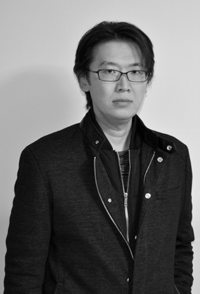
© Shigeki Hayashi |
|
Born in 1972 in Gifu, after completing the Advanced Ceramic Course at Tajimi Technical High School in 1997, Shigeki Hayashi embarked on his career as an artist, staging primarily solo exhibitions. His works are in the collections of museums worldwide, including the Victoria and Albert Museum (London, UK), Musée de la Céramique (Vallauris, France), and the International Museum of Ceramics in Faenza (Italy).
Made employing new creative methods while drawing on traditional casting techniques, Hayashi’s porcelain works have had a huge impact on the Japanese ceramics world. His original motifs that seem to have sprung from the realm of science fiction exploded the fixed ideas that have long-existed in the Japanese ceramics world while his overwhelming technical prowess continues to captivate ceramics fans around the globe.
Hayashi’s work shows that Japanese ceramics are capable of gaining ample recognition in the contemporary art world, establishing him as an important figure in Japanese ceramics circles who has elevated ceramics to the field of contemporary art.
|
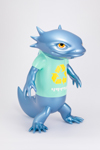
© Yuki Inoue
salamander
(T―shirt/PLASTIC POLLUTION)
(44x42x30cm, FRP) |
|
Born in Tokyo in 1972, Yuki Inoue creates art with the fundamental theme of "Evolution". The motifs for his work are living creatures that undergo metamorphosis at a certain time in their lives. He feels a sense of hope and determination at that very instance when these creatures take a leap and cross the borderline of transformation. Through this, he muses on how humanity grows and evolves.
He previously carved stone in his earlier works, but has moved on to synthetic materials in recent years in his search of a more malleable form. This was not just a change in materials; rather, it was a part of his own "evolution". He also consider this a challenge to push his artistic boundaries, as he fuses modern-day materials with traditions and practices that have been handed down for generations in Japan.
|
|

© Naoki Onogawa
Lullaby
(H25xW100xD26,
Mixed Media) |
|
Born in Tokyo in 1991, Naoki Onogawa visited Rikuzentakata city, Iwate Prefecture, which was devasted by the 2011 Great East Japanese Earthquake and Tsunami. He listened to the stories of the local people, and also toured the town. He said, "I was frightened by the fact that humans can't do anything about natural disasters, and I was also struck by the power of life shining in it."
Through this experience, he felt an affinity with the aspect of prayer that paper cranes have. The paper cranes he makes now, which are folded from 1cm x 1cm papers, are inspired by such "prayers".
|
|
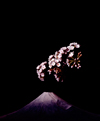
© Shingo Suzuki
Mt. Fuji and cherry blossoms
(68.5x56.5cm, Inkjet print on Japanese Paper) |
|
Born in Shizuoka in 1964, Shingo Suzuki hopes to be able to truly know the workings of the world by recreating the "world" with his fingertips. His creative process begins with recreating real-life scenes in miniature. Making miniature enables him to see things that he never noticed before, and discover meanings that were hidden in the scenery.
During the process of creation, his senses are heightened, and this state makes the miniatures differ from the real-life subject.
Repetition of this process creates a sense of distance between the recreated miniatures and reality that is unique only to himself.
The diorama exists only temporarily, and is destroyed after being photographed. The pictured image then becomes only a shadow of actual existence, and begins to form an added sense of remoteness.
Miniatures can only be incomplete. Thus, the miniatures guide the viewers to look at "the real thing" and through this process, "the real thing" truly becomes real.
|
|
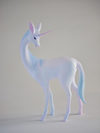
© Yoshimasa Tsuchiya
Unicorn
A 3/30 (H46xW30xD18cm, Painted Resin) |
|
Born in Kanagawa 1977, Yoshimasa Tsuchiya completed a doctoral course in sculpture at the Graduate School of Cultural Property Conservation at Tokyo University of the Arts. He studied the classical techniques and restoration of Buddhist art. After that, he applied these technique in wood carving works using cypress and camphor as materials, together with crystals and glass.
He creates motifs of imaginary creatures such as unicorns, as well as real animals such as deer, sheep, and cats. With a milky white colour and sometimes mysterious appearance, his works continue to fascinate viewers. The work exhibited this time uses resin as the material.
|
|
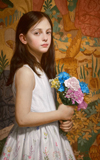
© Hiroshi Furuyoshi
MAYAⅠ
(53.0x45.5, Oil on canvas) |
|
Born in Hiroshima 1959, Hiroshi Furuyoshi creates works which have become a hot topic in recent years, and are also popular overseas. In 2016, one of his works was exhibited at Christie's London auction "Out of the Ordinary". It became a hot topic that it was sold at a high price and renewed the record high price of more than double the price of the previous year.
Hiroshi Furuyoshi has been drawing girls consistently for over 30 years. Although his technique is a realistic technique that follows classical painting techniques, he is highly-acclaimed for his portraits of girls with characteristics that are different from those of other realistic painting artists. The girl's eyes are cold and calm, as she stares at the world.
From the 1980s, when realistic paintings were viewed as low in the art field, to today's realism boom in Japan, his unwavering production attitude continues to fascinate Japanese art fans with a unique position that other artists cannot follow.
|
|
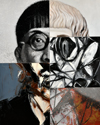
© Kotaro Hoshiyama
Leonard Foujita
(162.0x130.0cm, Oil and Acrylic on canvas) |
|
Born in Tokyo 1979, Kotaro Hoshiyama loved to draw people since childhood. He learned painting by copying manga, and after graduating from art school, he started working as an advertising designer. At the age of 30, he shifted his main occupation to writing, but for several years, his style changed with each exhibition, and he remained in his studio for the next four years without a clear aim. In search of originality, he painted a large number of ink paintings, but they were all unsatisfactory and remained unpublished during this period.
This slump brought him back to his true nature and gave rise to his current style of 'psychological collage'. This method of dividing the screen into panels like manga and juxtaposing various means of expression that reflect inner diversity and fluidity, is a combination of his personality of wanting to draw without being bound by a single style, and his editing skills as a designer. He thinks that it is style that matches his personality.
|
|

© Fuyuki Maehara
"One Moment” Sword
(80.7x86.4x30.5cm, Magnolia obovata, Buxus microphylla, Cryptomeria japonica) |
|
Born in Tokyo in 1962, Fuyuki Maehara entered the oil painting department of Tokyo University of the Arts at the age of 32, after working as a professional boxer and businessman. He is a sculptor with a unique background who graduated at the top of his class.
He often makes pieces that look like rust. In his intention, rust represents the passage of time. The rust is painted with oil paint, and the wood carving work is carved from a single piece of wood. Its transcendental technology is now attracting attention from all over the world.
|
| WHERE IS JAPAN CREATIVE CENTRE (JCC)? |
|
Is this your first time to Japan Creative Centre? Follow the map below to Japan Creative Centre now.
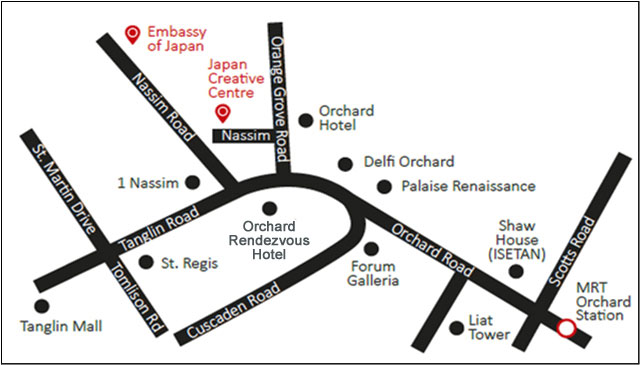
Getting to Japan Creative Centre
4 Nassim Road Singapore 258372
Tel: +65-6737-0434
By Public Bus:
Bus services: 7, 36, 77, 105, 106, 111, 123, 132, 174, 174E, 502, 502A, 502B (Alight in front of Delfi Orchard)
For latest information on bus routes and fares, please refer to SBS Transit.
By the MRT:
You may also take the MRT to the nearest MRT station, Orchard (NS22).
Train fares, travel times and route maps are available on the SMRT website.
Driving to JCC:
Nearest parking is at Orchard Hotel, Delfi Orchard and Orchard Rendezvous Hotel.
|
|

















